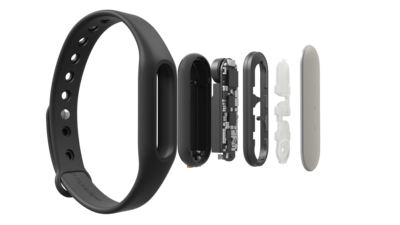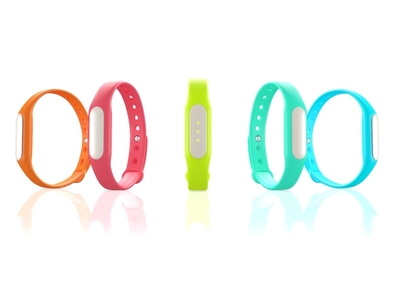~ Access Mi Band from Android - Notes on the Bluetooth LE Protocol
» By Joren on Thursday 13 August 2015The Mi Band is a bracelet with some sensors, three RGB leds and a vibration motor. It is marketed as an activity tracker and notifier. It is a neat little device that communicates via Bluetooth LE and has a battery life of around 30 days. It would be nice if it could be used for whatever purpose you want but alas, its API is not very open. This blog post gives pointers to useful resources and tips to make it work with your own code.
There have been some efforts to reverse engineer the Bluetooth protocol. This blog post contains some info. There are even complete implementations available of the protocol, there is a Mi Band protocol implementation in python and a Mi Band protocol implementation in Java. It is however not always clear which firmware version is targeted.
I would advise against installing the official Mi Band app, if you want to use it with custom code. The app upgrades the firmware to the latest version and it seems that Xiaomi is obfuscating the protocol more and more with each version. I was able to send vibrate and led commands to a Mi Band with firmware version 10.0.9.3. With the previously mentioned sources and the flow described to the right the device reacts to commands. I used an Android device. The flow:
- Pair with the Mi Band in the Android Bluetooth setting.
- In your code, connect to the paired device. Save the device address, you will need it later.
- Send a pair command to the device. This is part of the Mi Band protocol and has nothing to do with the previous Bluetooth pairing. If all goes well it reacts with a 2. See here
- Send user info. This step is crucial and not trivial. The user info needs to be encoded in a certain way and is CRC’d with the device address. The following is an example implementation of the Mi Band user info encoding
- Now you can send vibrate or other commands.
Some notes: the self-test command works without the set user step. For Android the Mi Band protocol implementation in Java works well. To check the firmware version of the device, call the get device info characteristic. The last bytes, interpreted as an integer, define the version info. For my device it is 10.9.3.2:
Write to characteristic 0000ff05-0000-1000-8000-00805f9b34fb onCharacteristicWrite status: 0 characteristic 0000ff05-0000-1000-8000-00805f9b34fb Read firmware version 11 value: 2 12 value: 3 13 value: 9 14 value: 0 15 value: 1
Another note: the set user info needs to be called with a 1 as type the first time the band is used. This is done with new UserInfo(20111111, 1, 32, 180, 55, "NM", 1) with the Android sdk by GitHub user pangliang. This sets and overwrites the user info. The next times you do not want to overwrite the info and the type needs to be zero.


